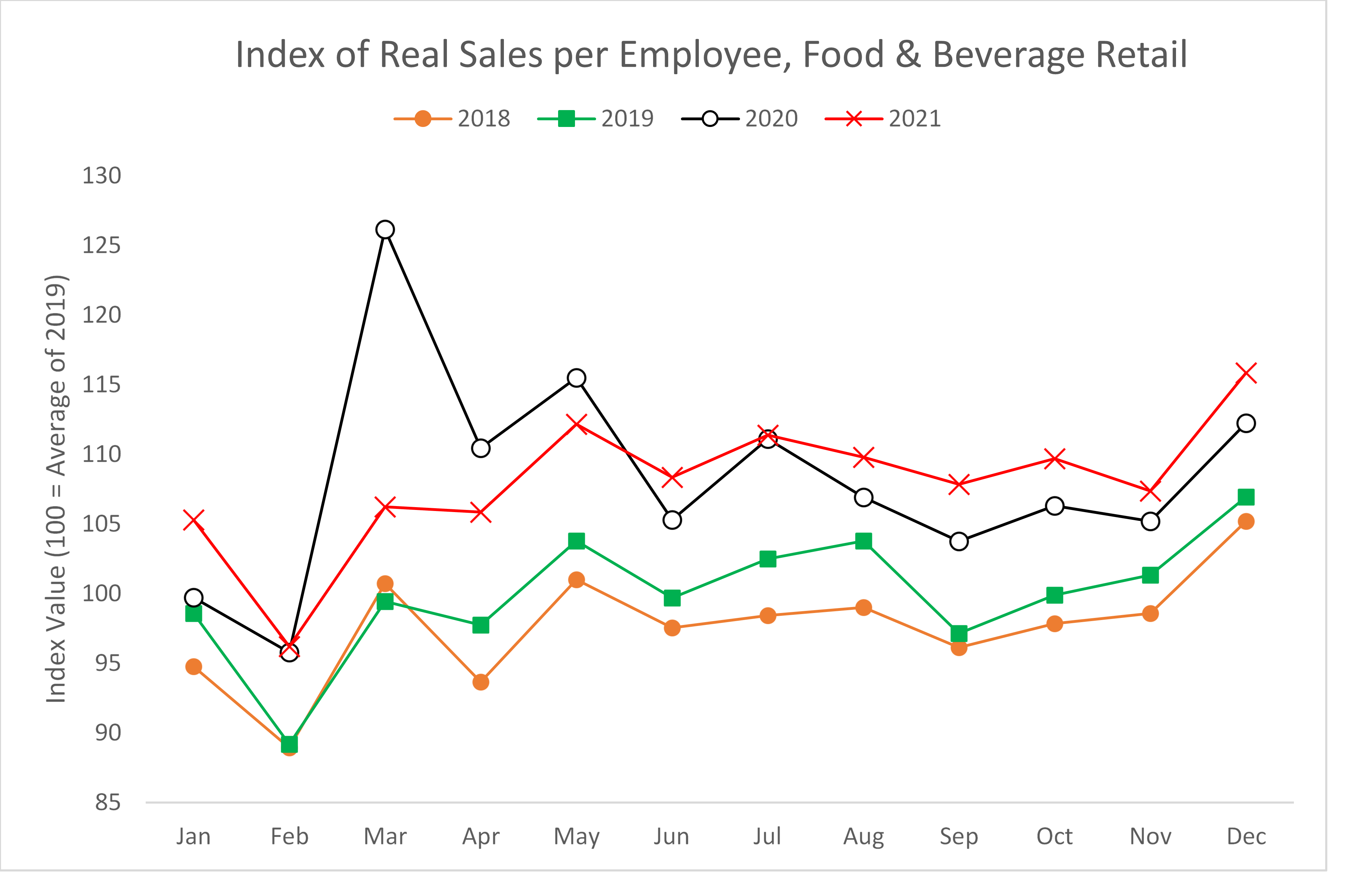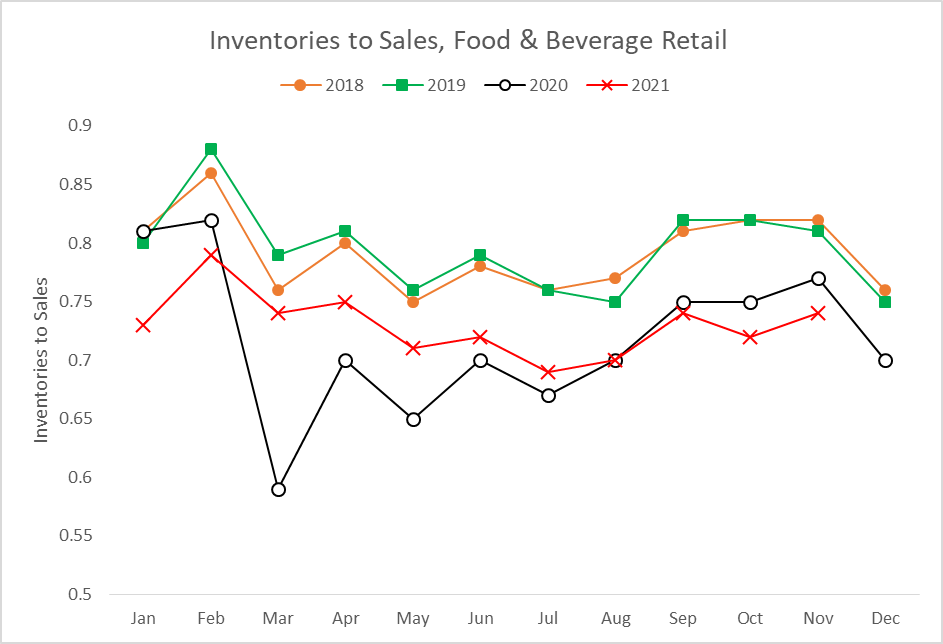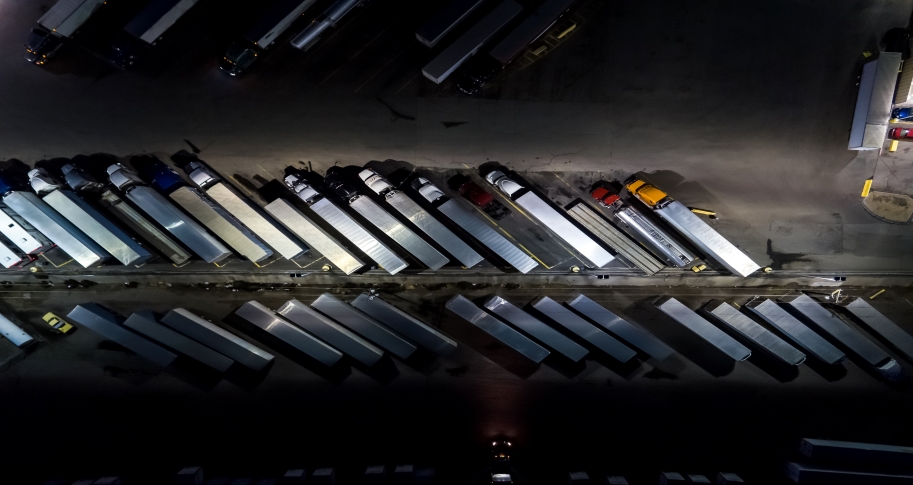
Media outlets such as CNN and Fox News have recently written about supermarket shelves being bare. Many consumers are concerned about this development, so we sought to provide a data-driven analysis of the problem. Synthesis and analysis of data from the Census Bureau, Bureau of Labor Statistics, and Bureau of Economic Analysis suggests three factors are at play.
Cause 1: Sales are elevated relative to employee headcounts.
To measure output per employee for food and beverage retailers, we calculated an index of real sales per employee, where real sales is calculated by deflating the Census Bureau’s not seasonally adjusted nominal sales data for food and beverage stores by the Bureau of Economic Analysis sales price deflator for food and beverage stores. Employment data comes from the Bureau of Labor Statistics not seasonally adjusted total employment for food and beverage stores. As shown in the first plot, real sales per employee were up substantially in 2021 relative to before the pandemic. For example, for July 2021 through December 2021, real sales per employee were over 10% greater than they were in 2019. This massive increase in physical unit sales per worker strains retailers’ efforts to keep shelves stocked.

Cause 2: Inventories to sales are still below pre-pandemic levels.
Changes in a retail sector’s inventories to sales show how quickly they turnover their inventory. Food and beverage stores turn inventory particularly rapidly. But they have been doing this even more rapidly since the start of the pandemic. For example, from July 2021 through November 2021, inventories to sales were 9.8% and 9.3% below their 2018 and 2019 levels, respectively, for these same months of the year. This means that, not only are sales per employee up, but there are fewer items available in the backroom and at distribution centers relative to sales. This further compounds the problem of keeping shelves stocked.

Cause 3: The Omicron variant is causing staffing woes.
The Omicron variant of the SARS-CoV-2 virus has resulted in skyrocketing infections. This has affected food and beverage stores’ abilities to maintain adequate staff.
The combination of higher sales per employee, fewer items relative to sales, and staffing problems are a “perfect storm” that is causing empty supermarket shelves. However, consumers can take solace in knowing that, once the Omicron variant passes, many health experts expect the SARS-CoV-2 virus to become endemic—like the seasonal flu—which should allow for a return to some degree of normalcy regarding supply chain matters.








